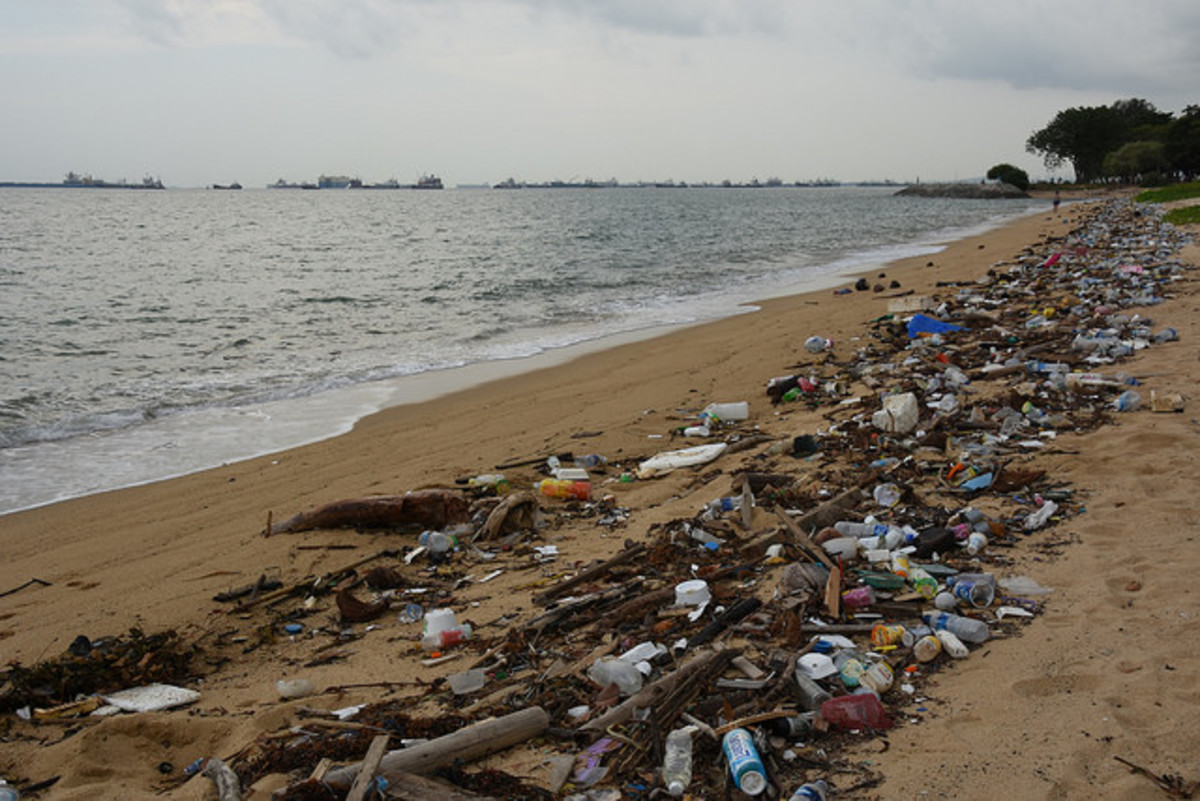Landfill - The Pros and Cons
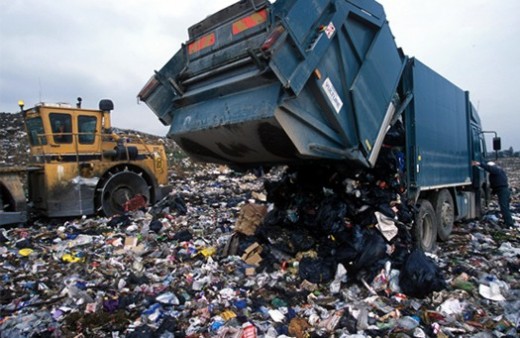
Prominent issues with landfill
Landfill has been around for millennia. As a method of rubbish or garbage disposal, it's cheap and convenient, but inherently flawed. The British government has recognised this and has taken steps to try and at least cut down on the amount of waste that goes into landfill.
What makes them flawed?
The first part of this issue is what we put in them and the second is how landfill sites are constructed.
What we put in them...
Household waste
This must be the most difficult to contend with as those who manage waste have to assume that people throwing stuff out are going to do so responsibly.
However, that's not the case.
People will throw things in their waste that shouldn't be there. That's just the way it is and what's worse, it's all wrapped up in plastic bags.
Industrial waste
At least this stuff is more predictable.
Industrial and commercial waste has to be declared. This way, the workers will know where to put stuff. For instance, Gypsum board (plaster board or drywall) cannot just be stuffed into landfill anymore as when attacked by leachate (we'll get to that later) it produces a harmful and potentially explosive gas called hydrogen sulphide.
However, although industrial waste is known, much of it still goes into conventional landfill.
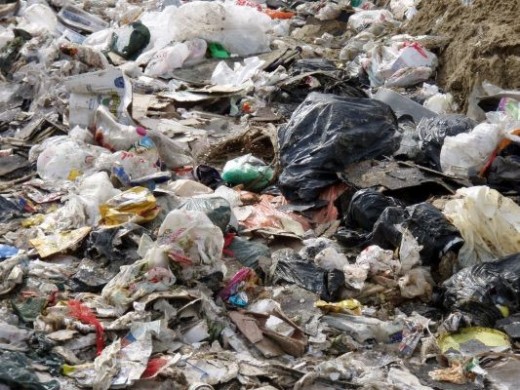
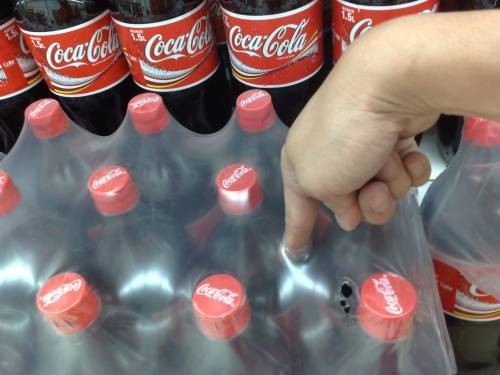
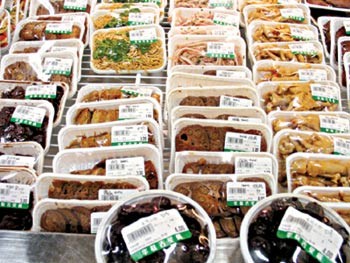

Plastics and the average consumer
Plastics are convenient aren't they?
Perhaps they are when you think of the applications they can successfully be employed for, but when it comes to disposables, I don't think convenient cuts it.
Some facts and figures
Let's take the ubiquitous plastic bag.
Some 380 billion bags, sacks and wraps are consumed by the US alone.
In Britain last year, this was said in the Guardian newspaper:
"...Figures from Wrap, the government's waste and resources programme, show that whereas 870m single-use plastic bags were handed out in the UK in May 2006, the figure for May 2009 was down to 450m – a 48% reduction, and 4,740 tonnes to send to landfill against 8,890 tonnes in May 2006... "
That's just the bags, sacks and wraps.
The fact is, these bags (to use an overall term) are made of polythene, one of the most difficult plastics to break down naturally. Though some state they are biodegradable, this is not in fact the case which DEFRA had confirmed, at least not in a household compost bin or even landfill. Sadly this web information is no longer available thanks to DEFA being moved and now residing within the .gov web site.
These 'bags' can take anywhere from 400-1,000 years to break down and that's only an estimate. More discouraging is the fact that when they do break down, it's entirely likely that they will release toxins such as chlorine-based compounds and worse.
That's just the bags.
Add to those, the cat food pouches, paint cans, disposable razors, sweet and snack wrappers, food containers--like those the supermarkets put meat in, drinks bottles, coffee jar lids, toys, footwear, outerwear and the myriad of other plastic-based stuff we use and you have a real problem.

The cost of disposal
Whilst government agencies are busy along with the average man and woman to recycle and reduce the waste and also some manufacturers are putting the plastic type and whether it can be recycled on their products, there are too few plastics that can be recycled or places where this can happen.
This means that these products are destined for landfill and that's where the costs skyrocket.
The costs can't just be measured financially either.
The average plastic takes forever to disintegrate and when it does, the likelihood is, it will leave in its wake a whole bunch of toxins that will simply render the land upon which it was buried contaminated and unusable.
This is a cost I don't think anyone can afford to bear.
How landfill works
The basics
For a diagramatic representation of this process, click here. It will do in moments what I would take an absolute age to do in words.
Done that?
Good.
So for those of you who checked out the structure of the landfill site, you may have noticed that the system requires a non-permeable membrane to prevent 'leachates' from escaping into the soil and so on into the soil and water table.
Leachates in this context are liquids--generally rainwater that has percolated down through the matter in the cells and has become a solute of some of the matter that dissolved as a result.
The resulting concoction is potentially dangerous. This is because in many cases, the rubbish that it has passed through and over, could contain anything. No-one knows the exact composition as no-one will have gone through all of it item by item.
In addition, as the rubbish breaks down, it produces Methane and Hydrogen Sulphide, the latter caused as mould and bacteria create an anoxic (oxygen depleted) environment. With the decomposition raising the temperature, the neutral Ph balance falls and causes metal ions which weren't able to be dissolved in the neutral liquid to be broken down along with other normally non-dissolvable products, such as fire ash and gypsum in plasterboard.
So isn't landfill a good way of getting rid of rubbish?
Although landfill nowadays--and I'm only talking in the last thirty-something years here--has become much safer. Indeed, in some cases, the methane gas, which is far more potent as a greenhouse gas than CO2 is actually being used in some places to produce electricity, so it's come a long way from a hole in the ground and the 'bury and forget' mentality of yesteryear.
That means that by-products of the landfill sites can actually be used.
There's far more that goes into them unfortunately, that can't.
So no, it's becoming more and more widely accepted that landfill is not as convenient a method of disposing of rubbish as had first been assumed.
Managing waste
In the sites of today, the rules are much more stringent as to what can be passed into landfill sites, however, that's more from the point of view of commercial and industrial wastes, however, that doesn't stop Mrs. Jones throwing her old radio in the bin when it finally gives up the ghost and she discovers DAB. It also doesn't stop her putting that ancient can of lead-based paint she found in the shed after her husband died in with the rubbish either.
So neatly wrapped up in a black plastic bag, are a whole bunch of nasties and if you think for one moment that Mrs Jones is alone, think again.
Managing that is impossible.
It's true that people in England are occasionally fined for putting items in their rubbish that should have gone for recycling or elsewhere, but this is a handful out of the entire population and I expect the same can be said of the rest of the world.
So whilst on the one hand, the regulations have tightened up, it doesn't mean that it's now become perfect by any stretch, and with production of waste increasing year by year, something has to be done.
Aside from the contaminants we know about, there are bound to be things we don't.
We don't know what contaminants will be released from plastics when they finally break down, or in some cases if they will break down.
Whilst arguments rage on about how and why plastics seem to be leaching poisons into our seas and oceans and many denying the possibilities, think about the hundreds of tonnes of plastics that find their way into our landfill sites every year, are subjected to a veritable cocktail of different chemical compounds from the leachate in the landfill and start finding out one way or the other.
After all, you can't manage what you don't know and since landfills are as prone to leakage as a British motorcycle, it's pretty important that we know what kind of a chemical smorgasbord is likely to be leaching into our green and pleasant land.
So landfills are good, right?
Sadly not.
Landfills are by nature unsafe, but then as it was pointed out to me, nothing is 100% safe, is it?
However, the frightening part about the safety aspect of landfill sites is that in order to protect the environment, they are lined with a composite liner before the waste is piled on top. This is clay soil and then a plastic membrane, which is supposed to be impermeable. They are then covered with another membrane, which is supposed to prevent the ingress of water from the soil on top of the cells.
The top doesn't stop the rainwater from getting in and the bottom membrane is prone to leaking. It's estimated that a 10 acre landfill site will leak anywhere between 0.2 and 10 gallons per day. This is because of the sheer size of the membrane and the propensity the seams have for coming apart or compromised with the extreme loads placed upon them.
Over such a wide area, this may not seem a particularly large amount, but when you consider what's likely to be present in that leakage of leachates, I'd want to be as far from that area as is humanly possible.

Leakage
"...82% of surveyed landfill cells had leaks while 41% had a leak area of more than 1 square feet," -- according to Leak Location Services, Inc. (LLSI) website (March 15, 2000).
Some leakage is inevitable, but then I suppose we should expect that. It happens when seams in the membrane either pull apart, were not welded together correctly in the first place or the material loses integrity.
The first two scenarios are much more likely--some even think this is inevitable even though it's not supposed to happen. Seepage may be small, considering the total area,but when one is dealing with poisons, how much is too much?
The leachate pipes should allow all the leachate to be pumped away, where it can be treated and the resultant slurry reintroduced either to the same landfill or sent to another. However, they can easily become clogged either by precipitation caused by chemical reactions due to the composition of the material that's in the landfill, from a build-up of micro-organisms in the pipes or due to the fact that some chemicals found in these places can actually undermine the pipe walls and cause them to be crushed under the many thousands of tonnes of rubbish piled on top of them.
Leachate is inevitable and can only be minimised by being capped or covered, not stopped altogether. So the leachate will build up and it will need to flow through the pipes as it forms and should not fill the hole.
The issue is when these pipes don't allow the flow of liquid and it builds up. This puts extra pressure on the upper and lower membranes and can lead to ruptures. In this case, leakage will be measured in far more than tens of gallons and the environmental issues that will result won't be small or pretty.
Another thing to remember is that the rubbish in these landfills is generally wrapped in plastic bags--it's our way of making sure that rubbish stays in one place. While some of the bags will break open and allow the contents to break down, many will not. As we now know, some of these plastic bags will take up to a 1,000 years to break down--especially hidden from sunlight, which can help speed up the process, which means that in some cases, the contents will also take longer to break down.
Given that government guidelines for landfill infrastructure are that they must last about 60 years, this is a little short of the time period that the contents can remain active. In other words, the landfill system will break down and become unstable some 940 years before the contents of the landfill does.
This then means that for some considerable time after the landfill is defunct, leachates will continue to leak into the area. As time goes on, so the leakage will increase, thereby contaminating more of the ground, likely rendering it useless, possibly even dangerous.
So that's it really
Landfills are not perfect, but they're the only things we have right now to deal with waste.
The only thing I can think of to make these places safer is to be more vigilant with what we consign to the dumps and landfill sites in the first place.
I think that a reduction in the production of plastics and other disposable items would be our first priority-especially PVC (or vinyl) and polythene.
Next would be to address companies that use plastics in their packaging, where other products would be better--especially for the environment. If they can't use renewable sourced materials in their packaging, then they should use recyclable materials such as the humble metal can or whatever alternative is most appropriate.
It's time we stopped thinking about convenience and thought more about the environment. So we should do away with pouches of cat food, plastic bottles of milk, plastic bags and began thinking about sustainable packaging that would perhaps be less harmful to the environment when it was thrown away.
Companies that pander to convenience should be held more accountable for the packaging they produce and not be allowed to pump more of what we can't readily get rid of into our waste systems.
Right now, it seems that waste is an issue that many make token gestures towards addressing, but don't actually appear to do much about.
Whilst it's nice to know that recycling has been taken up the way it has, now we need to address that which cannot be recycled, composted or otherwise broken down and rendered either inert or neutralised within the lifespan of the landfill infrastructure.
Perhaps it's time to go back to making stuff that lasts, instead of continuing to produce the billions of tonnes of disposable stuff that can't actually be disposed of.


